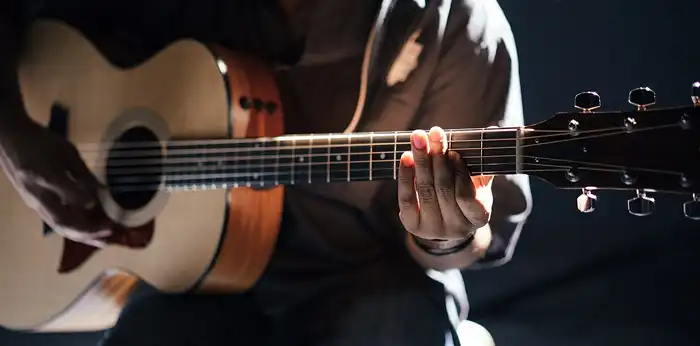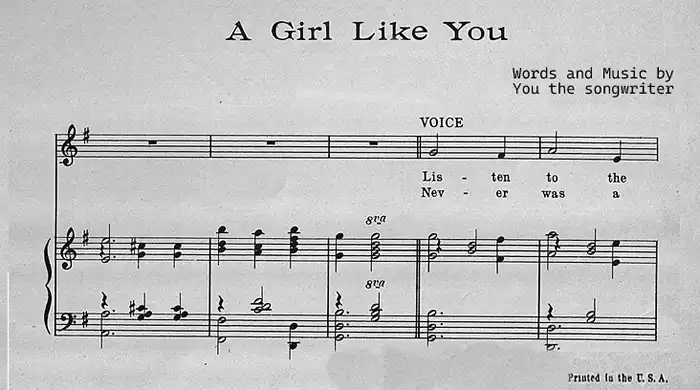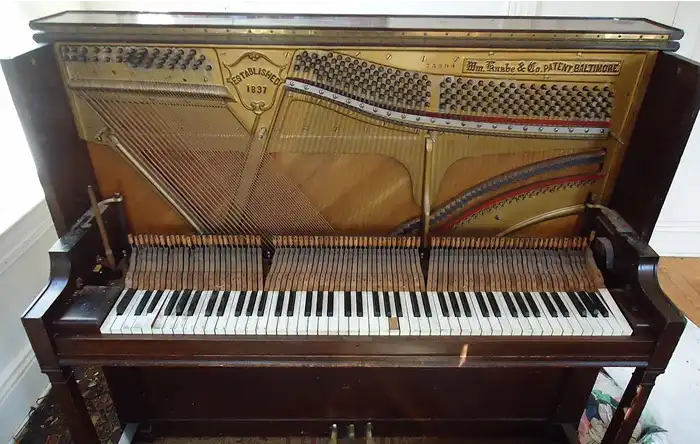Outlines for Writing a Music Composition
By Debbie Lynn
There are a vast number of ways to write a good song. An effective way for novice songwriters to start the writing process is to
follow an outline; all that is required is knowing the basics of an instrument like a guitar or piano, although do not
underestimate that it is challenging work writing a good song. It takes a while to gain the experience required to write a good
song, and the only way to get good at writing songs is to listen to other writers and their music and write, write, write!
First you want to start with an idea, and whether you start with the lyrics or the music, first you want the music and the lyrics
to fit together as one piece. Songs tell stories, and they are usually about people and what they would like to say, or have
said to other people, and the situation they are in or would like to be in.
A great idea for a song will usually answer three questions: who is singing the song, who are they singing the song to, and what
are they saying to the other person? A song is usually sung from one person to another person or from one person to the world.
Write your song ideas down on paper.
A great song will typically have a "hook", that is a memorable part in the song, usually in the beginning of the song. Popular
songs are often identifiable within the first few notes. A lyrical hook is a natural sounding phrase that captures what your
song is about and is usually a part of the chorus, and a part of the song's title.
You typically want to start with a chorus, which states the central idea, includes a natural sounding lyrical hook, and are words
and phrases that are simple.

There are three parts you will be adding to the music: a chorus chord progression, chorus melody, and a chorus arrangement or
accompaniment. The chorus chord progression harmonies are the foundation of your music. Simple progressions usually work best.
Once you have the beginning of a chord progression you can begin adding your lyrical melody and following the natural rhythm of
your words, this will tie your lyrics to your chord progression. Most chord progressions are basic chord repetitions, often
called arpeggios or broken chords, and usually run for only one or two measures that capture the mood of the song.
The typical structure of a song is verse 1, chorus 1, verse 2, chorus 2, bridge, and chorus 3. You usually start with 8 lyric
lines and 16 measures of music; the music is usually the same but with new lyrics every time. There are many four-chord
progression songs that use the same structure throughout the song; however, it is recommended you use fresh chords for the
verses. And as before repeat the progression four times throughout the 16 measures.
A verse arrangement is the same as writing a chorus arrangement but with a few distinctions. Typically, the verse arrangement is
low key and simple, the purpose is to grow intensity and energy in your chorus; you want to start low key and build intensity.
You typically have a verse arrangement that is different from your chorus arrangement, but not too different, you want the parts
to fit together and feel natural.
You want to set the scene of your song and give details in the clearest, most direct way, letting the listener know what the song
is about, while avoiding the second verse curse, where you have no idea where the second verse is going and how it ties in with
the first verse.
This is where the song's outline comes in and plays a key role in keeping your verses in focus and on the main idea of the song.
You want the focus to be from different focal but related points of view.

You want your verse melody to fit your chord rhythm before you begin adding song notes; verse melodies are looser than chorus
melodies, you want your chorus melodies to stand out and feel dynamic. You want your verse to increase in intensity as your
verses progress to help push the choruses.
You want each verse chorus to start out low key and build intensity towards the end of the verse, increasing in intensity with
each pass through.
A good bridge progression will lend the song a new perspective and is usually placed before the third verse giving the song an
unexpected and new twist, removing any boredom that may result from the song's repetition. However, many songs do not have bridges.
Once you have your ideas down on paper you will want to record your song, or demo. A simple piano and vocal arrangement or guitar
and vocal arrangement will be the most effective way to write a song. Keep the song fresh and take breaks if needed to keep your
work fresh and energetic.
Continue writing and recording, listening to your favorite songs and paying attention to the song's structure, lyrics, rhythm,
and tempo. Pay attention to the song's parts and how they fit together in the whole composition.
And no matter how hard the process appears, write, write, write, because the more you write the better you will become at
songwriting.

Add Comment
Insert Bullet List
Please enter at least one item.
Item:
Item:
Item:
Item:
Item:
Insert Numeric List
Please enter at least one item.
Item:
Item:
Item:
Item:
Item:
Insert Link
Please enter the link of the website
Optionally you can add display text
Insert Email
Please enter the email address
Optionally add any display text
Insert Image
Please enter the link of the image
Insert YouTube Video
Please enter the link of the video
Image Upload
Privacy Policy
This policy contains information about your privacy. By posting, you are declaring that you understand this policy:
- Your name, rating, website address, town, country, state and comment will be publicly displayed if entered.
- Aside from the data entered into these form fields, other stored data about your comment will include:
- Your IP address (not displayed)
- The time/date of your submission (displayed)
- Your email address will not be shared. It is collected for only two reasons:
- Administrative purposes, should a need to contact you arise.
- To inform you of new comments, should you subscribe to receive notifications.
- A cookie may be set on your computer. This is used to remember your inputs. It will expire by itself.
This policy is subject to change at any time and without notice.
Terms and Conditions
These terms and conditions contain rules about posting comments. By submitting a comment, you are declaring that you agree with these rules:
- Although the administrator will attempt to moderate comments, it is impossible for every comment to have been moderated at any given time.
- You acknowledge that all comments express the views and opinions of the original author and not those of the administrator.
- You agree not to post any material which is knowingly false, obscene, hateful, threatening, harassing or invasive of a person's privacy.
- The administrator has the right to edit, move or remove any comment for any reason and without notice.
Failure to comply with these rules may result in being banned from submitting further comments.
These terms and conditions are subject to change at any time and without notice.
{"commentics_url":"\/\/skoukor.com\/cmt\/","page_id":383,"enabled_country":true,"country_id":0,"enabled_state":true,"state_id":0,"enabled_upload":true,"maximum_upload_amount":3,"maximum_upload_size":5,"maximum_upload_total":5,"captcha":false,"captcha_url":"","cmtx_wait_for_comment":"cmtx_wait_for_comment","lang_error_file_num":"A maximum of %d files are allowed to be uploaded","lang_error_file_size":"Please upload files no bigger than %.1f MB in size","lang_error_file_total":"The total size of all files must be less than %.1f MB","lang_error_file_type":"Only image file types are allowed to be uploaded","lang_text_loading":"Loading ..","lang_placeholder_country":"Country","lang_placeholder_state":"State","lang_text_country_first":"Please select a country first","lang_button_submit":"Add Comment","lang_button_preview":"Preview","lang_button_remove":"Remove","lang_button_processing":"Please Wait.."}
{"commentics_url":"\/\/skoukor.com\/cmt\/","language":"english"}
|
Copyright © Skoukor Music 2025
|
||

|
||


Comments